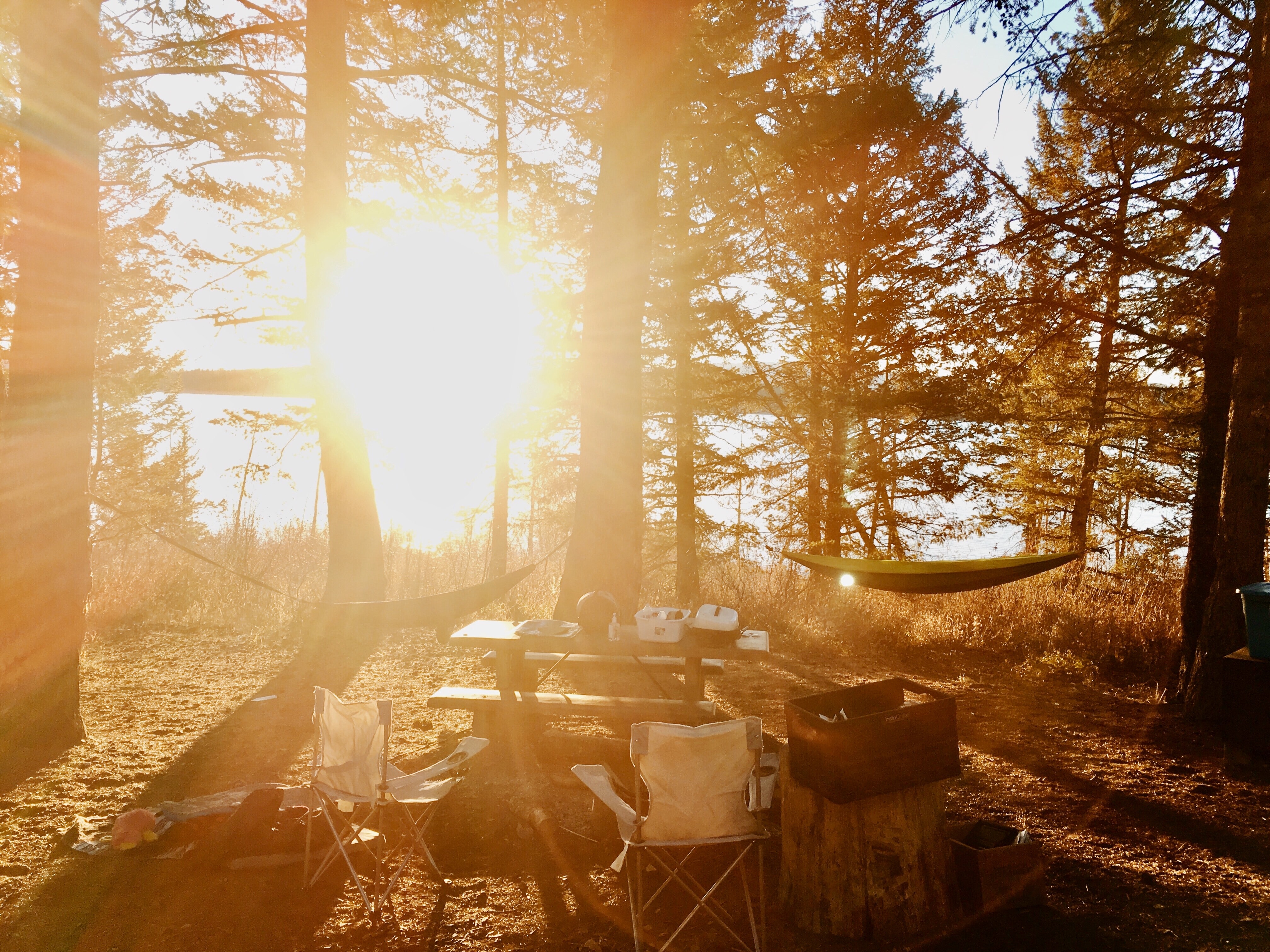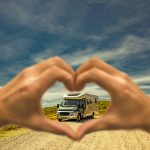What could be better for wildlife watchers and photographers than to see free-roaming animals in their natural habitats? Discover animals in their natural habitats during your next camping trip. Visit one of these fantastic national parks for wildlife watching.
Salish Sea, Washington
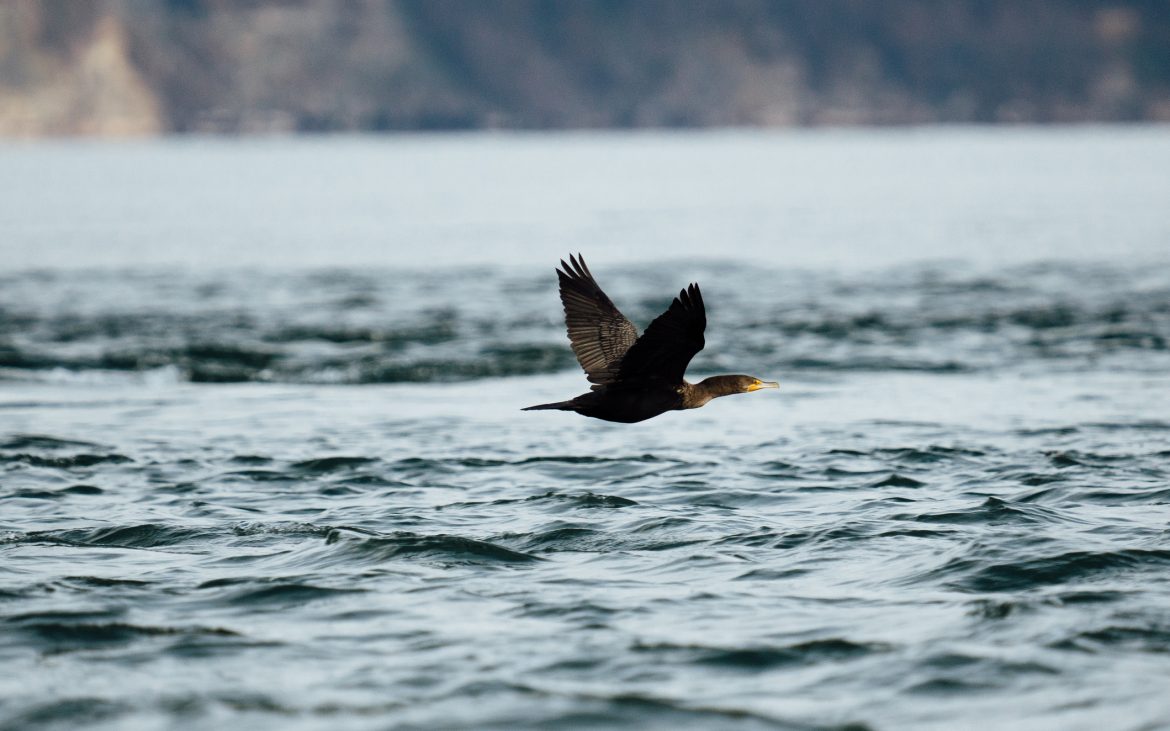
Double-Crested Cormorant flying about the Salish Sea in Hansville. Photo Credit: Getty Images, Cavan Images
The Salish Sea is a marine ecosystem that spans the United States-Canada border and includes both Seattle and Vancouver. It’s one of the world’s largest and biologically rich inland seas. Encompassing Puget Sound, the San Juan Islands, it’s home to endangered southern resident killer whales.
Boat tours leave from Anacortes, Washington and get close enough to the orca for visitors to hear them puff air from their blow holes. And Salish Sea Expeditions supports STEM and inspires youth to connect with the marine environment through boat-based scientific and hands-on learning and critical thinking.
- Coastline length: 4,642 miles
- Total number of islands: 419
- Number of animal species: 37 mammals, 172 birds, 253 fish, 2 reptiles
Stay: Elma RV Park, Elma, Washington – Come for the small-town hospitality and nearby fishing, hiking and kayaking.
Grand Teton National Park, Wyoming
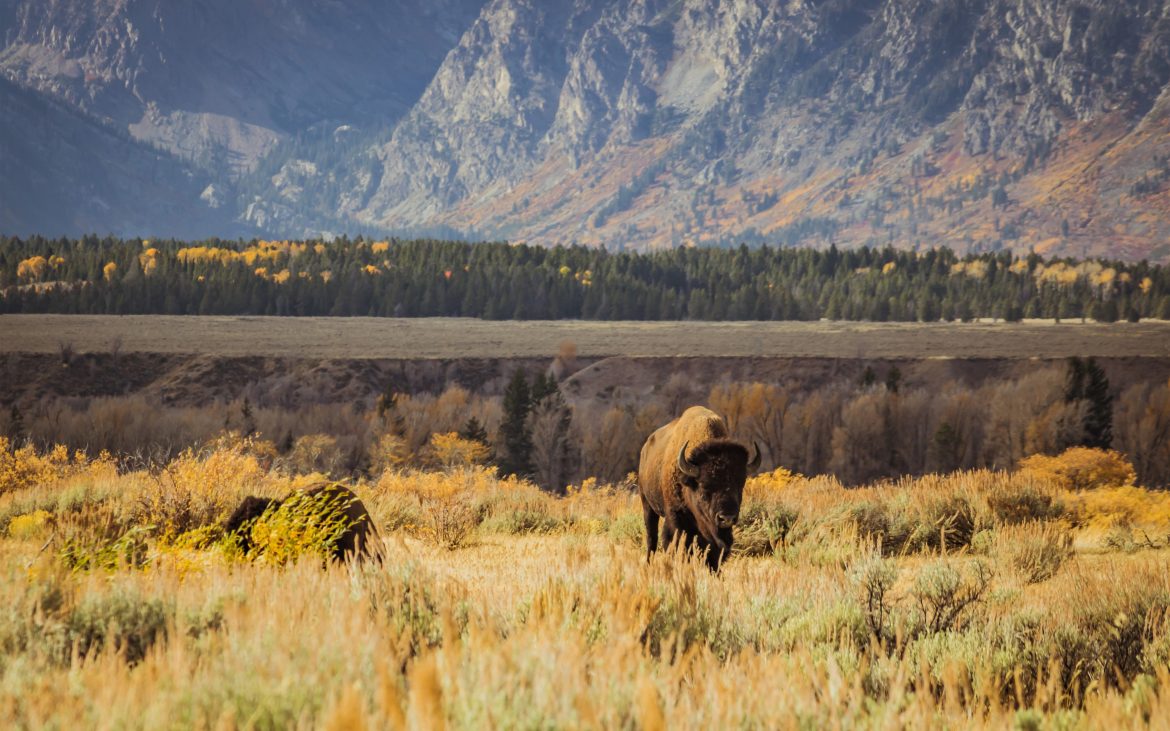
This small group of buffalo were near the main road in Grand Teton. Photo Credit: Unsplash, Tim Peterson
Moose, grizzly, black bears, moose, elk and bison can be seen peacefully grazing in the park’s meadows. Sixty-one species of mammals are found in the park’s habitats of alpine, coniferous forest, sagebrush flat and wetland. This colossal park lies in the heart of one of the largest, intact temperate ecosystems in the world. Moose-Wilson Road is one of the more popular drives for spotting wildlife. Forested areas harbor mule deer, elk and black and grizzly bears. Oxbow Bend is another prime spot among wildlife watchers, boasting numerous species of birds, such as bald eagles, trumpeter swans and osprey. Try booking a tour with a company that offers half-day or multi-day wildlife safaris to get the most of your adventure.
- Miles of Trails: 600
- Highlights: More than 2,300 lakes, large glaciers, and the highest peak in Wyoming (Gannett Peak at 13,804’)
Stay: The Longhorn Ranch Lodge and RV Resort, Dubois, Wyoming – No rig too big, with waterfront sites. Many sites are on the shore of the Wind River or along tranquil ponds.
Stay: Highline Trail RV Park, Boulder, Wyoming – Campers will find full hook ups and four buddy sites, great stop to & from Yellowstone.
Glacier National Park, Montana
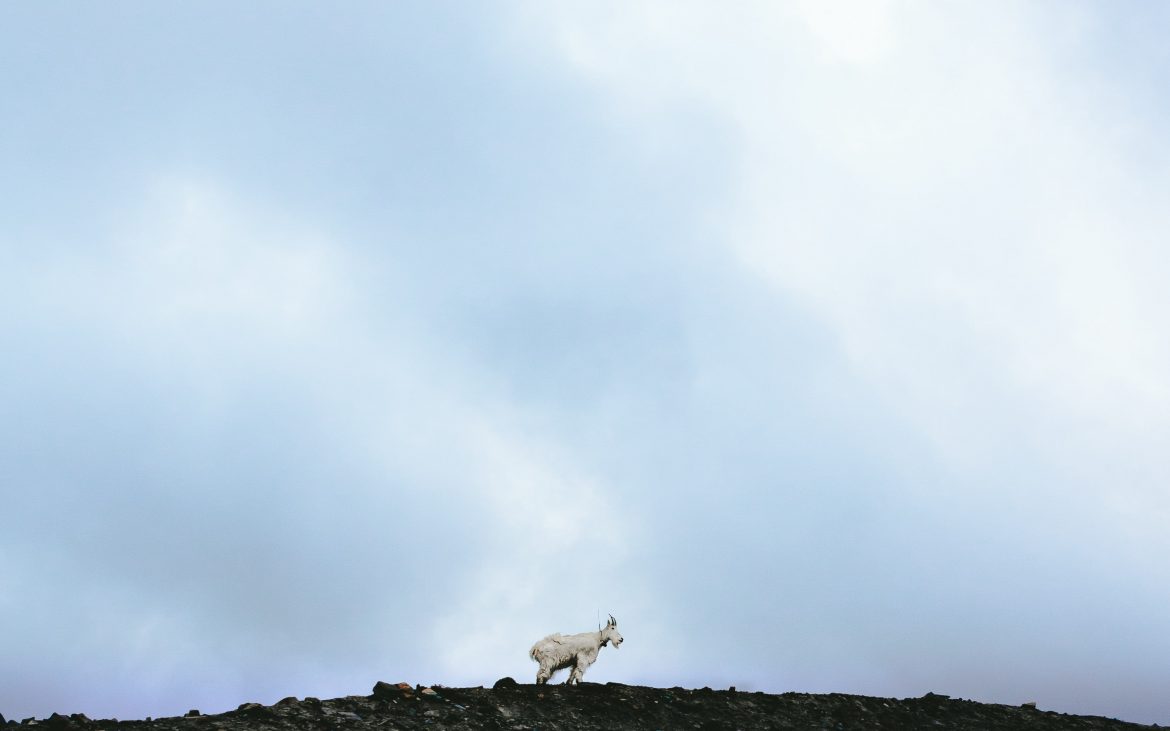
Going-To-The-Sun Road, West Glacier. Photo Credit: Unsplash, Ivana Cajina
It’s called the Crown of the Continent for a reason. Featuring alpine meadows, deep forests, waterfalls, about 50 glistening glaciers and 200 sparkling lakes, it’s a photographer’s paradise. Montana is home to some truly majestic creatures. It’s home to 18 national wildlife refuges. Fish for walleye, smallmouth bass, or northern pike on the lake in the town of Fort Peck. Glacier is known for its bighorn sheep population, which can be seen atop the Continental Divide near the visitor center. The park service counts 66 different types of mammals, including grizzlies (look for them in and around Lake Mary), lynx, cougar and elk. That’s a lot of wildlife watching opportunities. Take a four-day drive through the Bitterroot Valley where you can ski, hike, see wildlife and soak in natural hot springs.
Stay: West Glacier RV Park & Cabins, West Glacier, Montana – Discover one of the most beautiful travel destinations in North America and stay just steps away to the entrance.
Yellowstone National Park, Wyoming
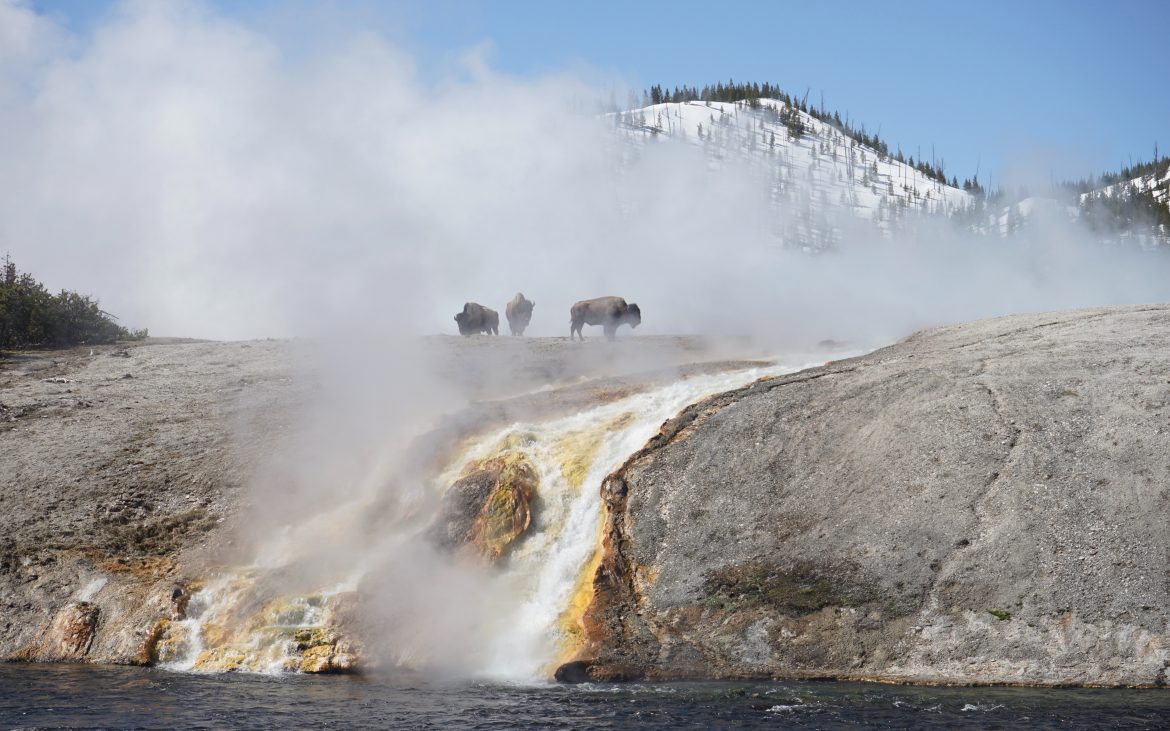
Bison in Yellowstone National Park. Photo Credit: Unsplash, Jean-Baptiste Lefevre
It’s not only one of America’s most famous national parks, it was the world’s first. Yellowstone has the largest concentration of animals in the lower 48 states, and wildlife watching and RV travel blend nicely here. Bison and bears, the largest mammals in Yellowstone, can be seen in both summer and winter. Look for gray wolves, wolverines, lynx, elk, moose and numerous other mammals. Elk are the most abundant large mammal found in Yellowstone and are an important species with the Greater Yellowstone. They are member of the deer family. The male’s antlers can grow up to an inch a day at peak growth. The antlers stay with the animal throughout the winter breading season. Then after the antlers drop off, typically in March, and the process starts all over again. Nothing says wild west America romance like wild horses. See magnificent Prior Mountain wild horses roam the desert near Billings, Montana.
Pro Tip: Get out early. While the sound of the alarm clock can be rough while on vacation, the early bird gets the worm! You’ll be rewarded with more active wildlife and fewer crowds. Pack a picnic breakfast and hot chocolate while you enjoy the incredible sights.
Stay: The Virginian Lodge and RV Park, Jackson, Wyoming – Enjoy all of the lodge’s amenities including pool, spa, restaurtant and store. And walk to downtown Jackson!
Everglades National Park, Florida
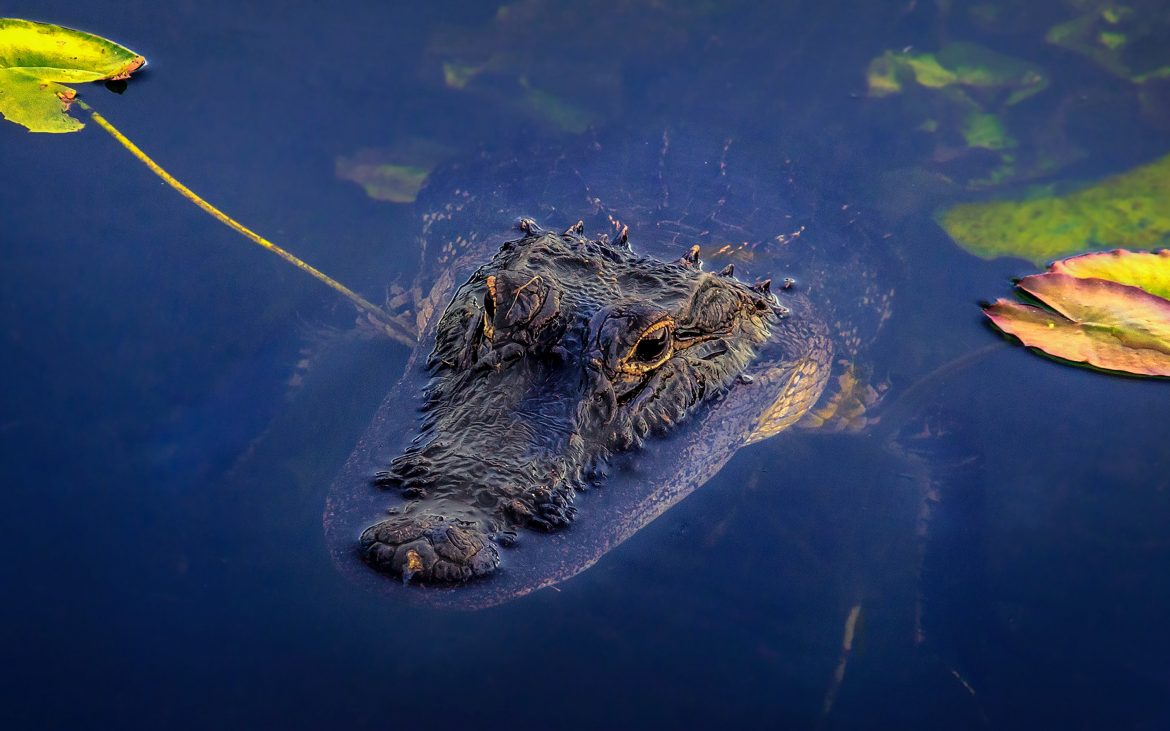
Everglades National Park. Photo Credit: Unsplash,
Sterling Lanier
Explore the sunshine state’s untamed nature, a sanctuary for migratory birds and raptors and a refuge to get happily lost in. The park protects the southern part of the Everglades, and yes, alligators do dwell here. But the park also features 36 federally protected animals, some of which face grave threats to their survival. A gator cousin, the American crocodile, is one of them. The Everglades are also home to manatees, white-tailed deer, bobcat, and scores of endangered animals, like the Florida Panther. From April to October, it’s hot and humid, but there are fewer crowds. Whenever you decide to go, pack bug repellent or netting and be prepared for drenching rain. The Everglades is only an hour drive from the hustle and bustle of Miami, but a tranquil world’s away, perfect for wildlife watching.
Pro Tip: This bustling ecosystem is a special opportunity to view wildlife, but from a distance. So, invest in good optics. Large, expensive lenses for wildlife photography can be rented for the duration of your trip from local or online photography stores.
Stay: Bonita Terra, Bonita Springs, Florida – Enjoy bingo in the clubhouse, tennis, league games on the softball fields or lounge in the swimming pools.
Rocky Mountain National Park, Colorado
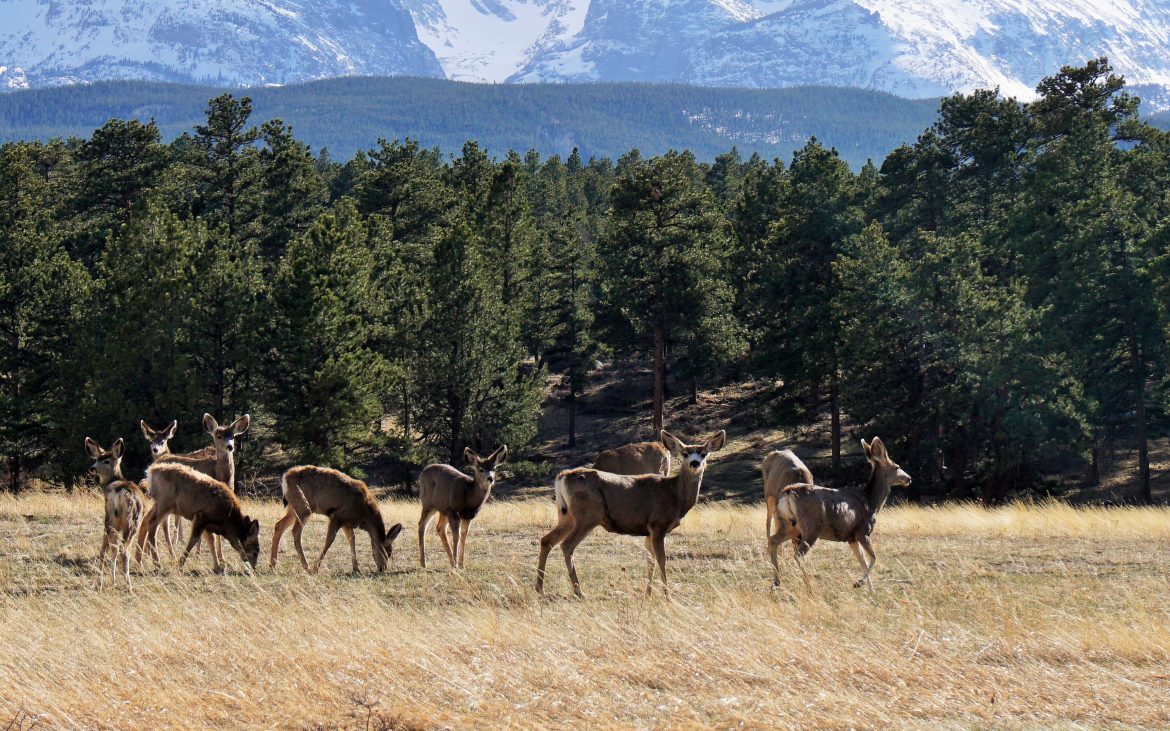
Rocky Mountain National Park, Estes Park. Photo Credit: Unsplash, MissMushroom
Rocky Mountain National Park is one of America’s best places to see wildlife and birds. Whether bighorn, elk, mule deer or other wildlife, Rocky Mountain visitors flock to see big mammals. Winter elk herds of 600, about 350 bighorn sheep and numerous mule deer call the park home. It’s a great place for wildlife watching and RV camping. In 2000, Rocky Mountain National Park was designated a Global Important Bird Area. This designation recognizes the vital role of the park as diverse habitat for a wide variety of bird species. In the fall, check out Moraine Park and Horseshoe Park. Bighorn sheep visit natural mineral licks in Horseshoe Park, especially in May and June. Moose live in the Kawuneeche Valley and frequent willow thickets along the Colorado River. Bull moose have become a common sight at Lily Lake. The Lily Lake Loop in Rocky Mountain National Park is an excellent hike for the entire family. It’s a level, fully accessible trail, that circles around the lake and nearby wetlands for just over three-quarters of a mile, and is conveniently located near Estes Park.
Stay: Elk Meadow Lodge and RV Resort, Estes Park, Colorado – Blending scenery and history for a true outdoor experience, Elk Meadow is ideal Rocky Mountain experience.

